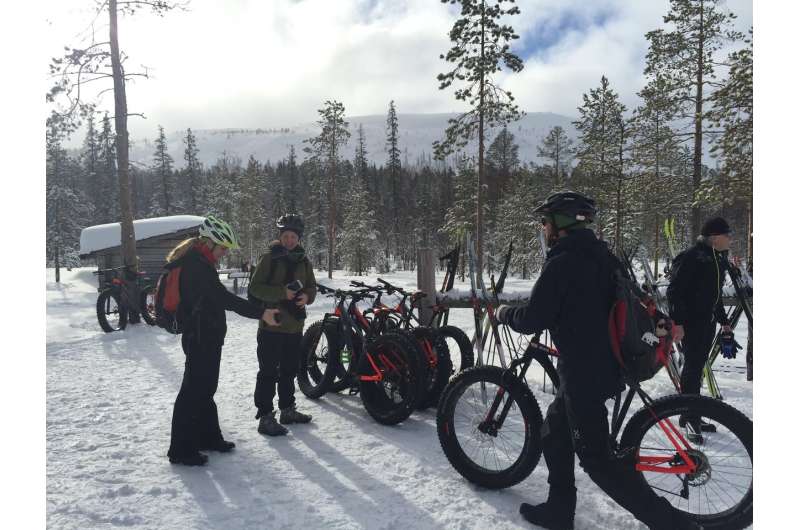Visitor patterns and emerging activities in national parks revealed by social media posts

Social media data provide a reliable information to support decision making in national parks. Researchers from the Digital Geography at the University of Helsinki have been studying whether social media data could be used to understand visitor's activities in national parks and most recent results are presented in Scientific reports: "Instagram, Flickr, or Twitter: Assessing the usability of social media data for visitor monitoring in protected areas."
National parks are the cornerstone of biodiversity conservation and provide recreational benefits to humans. Park management and planning require up-to-date information about visitor amounts and their activities.
"As conservation authorities often lack resources to carry out traditional visitor surveys, social media offer a novel and cheaper means of collecting such information", says Dr. Enrico Di Minin, a conservation scientist investigating nature-based tourism benefits.
At the University of Helsinki, the researchers from the Digital Geography Lab have been studying whether social media data could be used to understand visitor's activities in national parks. By collaborating with national park authorities in Finland and South Africa, the scientists have been able to investigate whether social media data could provide reliable information to support decision making in national parks. Traditional data sources obtained from these collaborators have made it possible to compare whether social media data could be used in place of visitor surveys and counters.
Instagram clearly works the best
In the recent article the scientists assessed the usability of different social media platforms (Instagram, Twitter and Flickr) in estimating the visitation rates across 56 national parks in Finland and South Africa.
"We found that the visitor rates and the popularity of the park extracted from social media data followed closely the official visitor statistics. However, Instagram clearly worked the best", says Dr. Henrikki Tenkanen, the lead author of the article.
Earlier work from the group also showed that social media data can be used to understand what visitors prefer to see in the parks and what kind of activities they conduct. "It is interesting to see that what people state in the interviews they value about nature, is also what they actually post about when visiting the park", says post-doctoral researcher Anna Hausmann, who has been studying the preferences and sense of place of people in African national parks.
Emerging activities: Winter biking and kite surfing
Social media feeds can also be used for observing emerging trends within protected areas. "In Finnish Lapland, we were able to capture the emergence of new activities like winter biking and kite surfing by looking at the content of social media posts that were not captured by traditional visitor surveys", says PhD candidate Vuokko Heikinheimo.
The use of social media platforms is continuously increasing worldwide. This opens completely new possibilities to understand what and where people experience and value. "Although social media data is seemingly chaotic and sometimes biased, it can provide increased understanding on the use of natural areas" says associate professor Tuuli Toivonen, the leader of the research group.
More information: Henrikki Tenkanen et al. Instagram, Flickr, or Twitter: Assessing the usability of social media data for visitor monitoring in protected areas, Scientific Reports (2017).
Journal information: Scientific Reports
Provided by University of Helsinki

















